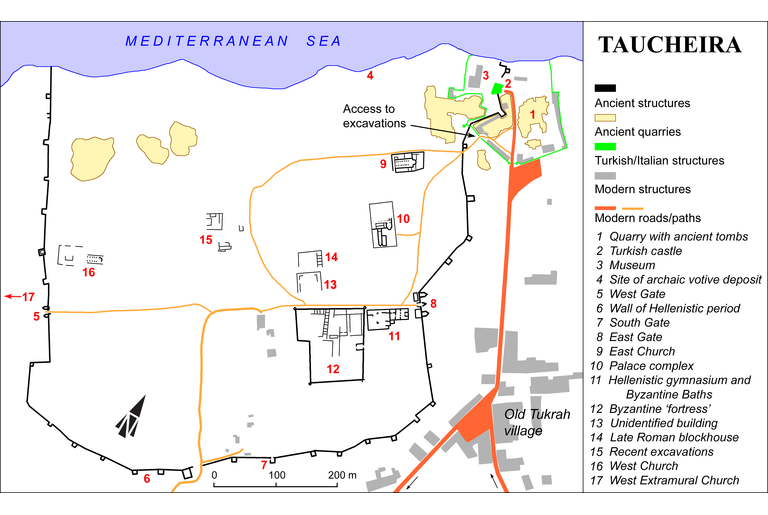Gift
IGCyr002000
Trismegistos ID: 738121
Source Description
Support
Komast cup, Attic black figure ware (diameter 0.164).
Layout
Graffito along inside of rim.
Letters
0.006-0.009; epsilon with vertical stroke protruding below, quite dissymmetrical nu, one rho with very short tail, small four-strokes sigma, no ksi.
Place of Origin
Findspot.
Date
Ca. 500 B.C. (monument-type)
Findspot
Found between 1963 and 1965 at Taucheira pleiades; HGL : archaic votive deposit .
Last recorded Location
Seen by J. Boardman between 1963 and 1965.
Present Location
Not seen by IGCyr team.
Text constituted from
Transcription from previous editor (CDL).
Bibliography
Boardman-Hayes, 1966 Boardman, J., Hayes, J., 1966, Excavations at Tocra 1963-1965. The archaic deposits I, British School of Archaeology at AthensSuppl. 4, London - see in bibliography , p. 169, n. 1036 (ph., dr.); Dobias-Lalou, 1970 Dobias-Lalou, C., 1970, Pour une chronologie des inscriptions archaïques de Cyrène, Revue de Philologie, de Littérature et d'Histoire Anciennes (RPh)ser. 3, 44, 228-256 - see in bibliography , p. 255, n. Cf. Dobias-Lalou, 2015 Dobias-Lalou, C., 2015, Les débuts de l'écriture en Cyrénaïque, in A. Inglese, Epigrammata 3. Saper scrivere nel Mediterraneo antico. Esiti di scrittura fra VI e IV sec. a.C., in ricordo di Mario Luni. Atti del convegno di Roma, 7-8 Novembre 2014, Tivoli, 59-80, 315-321 - see in bibliography , p. 68.
Apparatus
1 Κσε̄νάνδρο̄[ι] : Dobias-Lalou, 1970 Dobias-Lalou, C., 1970, Pour une chronologie des inscriptions archaïques de Cyrène, Revue de Philologie, de Littérature et d'Histoire Anciennes (RPh)ser. 3, 44, 228-256 - see in bibliography Χσενανδρο [---] : Boardman-Hayes, 1966 Boardman, J., Hayes, J., 1966, Excavations at Tocra 1963-1965. The archaic deposits I, British School of Archaeology at AthensSuppl. 4, London - see in bibliography ε [c. 2 - 3] ++σεν Ανδρο[---] (Boardman's reading)
French translation
Cadeau de Kresa à Xenandros.
English translation
A present of Kresa to Xenandros.
Italian translation
Regalo di Kresa per Xenandros.
Arabic translation
هدية كريسا لكسيناندروس.
Commentary
The inferior edge of E and the whole K are clear from the photograph, allowing to restore ἔδōκε. The new reading fits the type of cup better than a dedication to Demeter and/or Kore, which is the bulk of the other finds. Boardman noted that the script might be Attic. If so, we should have a spelling Χσένανδρος, whereas a kappa seems unescapable here. On the other hand, a form Κρε͂σ(σ)α for the woman's name would not be Attic. On the whole, this graffito seems to be rather Cyrenaican.
Creative Commons Attributions-NonCommercial 4.0 International License.
All citation, reuse or distribution of this work must contain a link back to DOI: http://doi.org/10.6092/UNIBO/IGCYRGVCYR and the filename (IGCyr000000 or GVCyr000), as well as the year of consultation.
